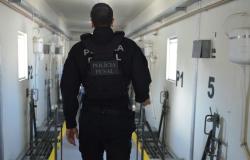Son of artisanal fishermen, Itajone Morais has seen his family’s trade and the way of life of his community called Guamaré, on the coast of Rio Grande do Norte, threatened by wind energy projects. Huge parks already occupy the land and are now planning to expand into the marine environment.
Itajone, who is part of the Movement of People Affected by Renewables (MAR) and the Association of Artisanal Fishermen of Guamaré, shared this and other experiences in the Social Cartography of the Sea in Rio Grande do Norte, a document that brings together surveys of areas used by traditional communities fishing grounds for housing, development of productive activities, preservation, shelter, reproduction of species and other resources necessary for their habits and customs and the environmental balance of the region.
The project, led by Assessoria Cirandas through its Dragão do Mar Program, with support from the Pastoral Fisheries Commission and consultancy from the Federal University of Ceará (UFC), also includes five other territories: Enxu Queimado, Galinhos, Macau, Reserva Ponta do Tubarão and Dunas do Rosado – all on the coast of Rio Grande do Norte and of interest to wind farms.
Energy generated by wind, which has growth projections for the coming years and decades, represents 12% of the Brazilian electricity matrix, according to the Brazilian Wind Energy Association (ABEEólica). Although wind tower complexes already occupy the ground in several Brazilian regions, their installations in the marine environment are new and have become an onslaught of companies. In the state of Rio Grande do Norte alone, Ibama, the body responsible for licensing this project scope, has already received 14 licensing requests for the installation of offshore wind complexes, scheduled to come into operation from 2030.
João Paulo Diogo, executive coordinator of the Assessoria, explains that the material “is not an instrument of denunciation, but rather a means that calls on governments, the energy sector, researchers and social movements to seek ways to produce renewable energy without compromising the existence of traditional communities. For Itajone, the social cartography of the sea “supports us when these planned developments arrive. We have the document to say that this fishing and tourist activity exists here.”
With the aim of discussing the discoveries of the material with the public authorities, Assessoria Cirandas organized, in March, several agendas to formally deliver it. Maria Araújo, project analyst at the entity, says that there were dialogues with the Brazilian Institute of the Environment and Renewable Natural Resources (Ibama), Institute of Economic Development and Environment (Idema), Secretariat of Union Heritage (SPU) and Public Ministry . “They will access a new tool that shows how there is a dynamic in these territories, which must be taken into consideration in the water use licensing process. We also suggest alternatives in accordance with socio-environmental distancing safeguards for the installation of wind farms”, she argues.

Social cartography as a socio-environmental protection tool
Social cartography “is an approach within cartographic science and a methodology that aims to link technical, scientific and academic knowledge with knowledge of life”, describes Regina Balbino, geography and member of the UFC Geoprocessing and Social Cartography Laboratory, one of the partners in the execution of social cartography in Rio Grande do Norte. “It’s about uniting empirical knowledge with scientific knowledge”, she adds.
According to the researcher, there is similarity in terms of the activity and potential impacts of wind projects in the two northeastern states. This factor, combined with the success of the social cartography carried out in Ceará, culminated in the invitation for the Laboratory to support the development of the initiative in the territory of Rio Grande do Norte.
For populations, social cartography has emerged as another valuable tool to involve them in the planning process “and ensure that their voices are heard, promoting their participation in the management of marine and coastal resources and in the defense of their traditional fishing territories ”, says João Paulo. “We say that these communities began to exist on the map”, adds Regina, citing the discoveries of the activity on the coast of Ceará: more than 300 traditional communities were identified throughout the 23 coastal municipalities.
It is a process of self-recognition, continues the researcher. Therefore, the application and methodology of cartography involved several steps: contact with partner entities and community leaders and participatory workshops with georeferencing of fishing routes and areas, including identification of the type of fish found in each location. “This process not only highlighted areas of critical importance for artisanal fishing, but also served to record and validate the traditional knowledge of fishing communities”, adds João Paulo.
Discoveries from Social Cartography of the Sea: impact for communities and ecosystems
According to Regina, there is a lack of examples and references about the impacts of wind farms at sea, as there are still no projects of this type in the Global South. She also cites the deficit in fishing statistics. According to the Food and Agriculture Organization of the United Nations (FAO/UN), in Brazil, at least 1 million people are directly linked to artisanal fishing, but the country lacks updated qualitative and quantitative data on the craft.
João argues that, with the social cartography of the Potiguar sea, it was possible to identify that many areas of interest for the installation of wind farms overlap fishing areas essential for the maintenance of artisanal fishing – that produced on a small scale. “This points to a strong indication of putting at risk the food and economic security of more than two thousand artisanal fishermen and women, by limiting access to spaces traditionally used for fishing and potentially reducing the availability of fishing resources”, he argues, when cite two scientific journals that were used in cartography, Fisheries Research and Marine Environmental Research.
Access limitations refer to the distance required between wind towers at sea, explains Regina. Although the legal framework is still under construction and there are no projects legally approved by Ibama, the Brazilian Navy has already established an ordinance defining that there will be no possibility of vessels circulating within a radius of 500 meters away from the towers. Most projects aim for at least 70. This would involve changing navigation routes and potentially increasing operational costs for fishermen and fisherwomen, who could also have their dynamics and paths affected not only at sea, but also on the coast.
For coastal wetlands, such as beaches, estuaries, seaweed beds, coral reefs and mangroves, etc., developments pose multiple risks by potentially degrading and altering the ecosystem. Such wetlands, in turn, sequester carbon and help mitigate the effects of climate change by mitigating excessive coastal erosion and reducing the risk of storm surges and sea level rise.
Furthermore, sea currents and sedimentation patterns can be widely affected, directly affecting marine biodiversity. Regina explains that, for example, the cabling that takes the energy generated in the tower to the distributors is done by excavating the ocean floor, which creates a disturbance. “There are studies saying that the electromagnetic field that these towers will generate will disrupt some species, leaving them stunned. There are also studies that indicate that, after the environment is stabilized, artificial reefs will be generated and a consequent agglomeration of species,” she says. In addition, the noise generated by the construction and operation of turbines can affect sound-sensitive species.
Although the mapping reveals the impacts that wind farms could cause, Regina reinforces that the problem is not the energy production itself, but rather its implementation and planning. The researcher recognizes the need to transition from the fossil energy matrix to renewable energy, but highlights that wind energy “must be ‘clean’ in the way it is implemented”. In her view, this is “what must be changed so that there are not so many impacts and so that so many people are not harmed”.
Finally, João argues that participatory tools such as social cartography of the sea are a crucial step to promoting a fair energy transition, but not only that. “It is essential that the implementation of renewable energy projects at sea, such as offshore wind farms, is accompanied by detailed environmental impact studies and a discussion on coastal and marine planning that gives a voice to traditional fishing communities, guaranteeing the rights of communities places”, he concludes.



Tags: Survey maps areas impact offshore wind farms fishing communities
--










